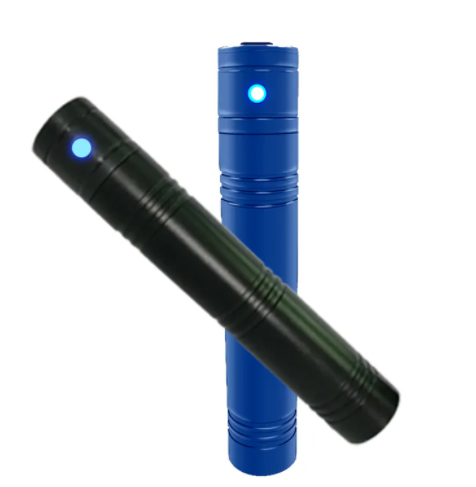What is the guard tour patrol system used for?
In an increasingly connected and fast-paced world, security remains a top concern for individuals, businesses and organisations. Patrol systems have become an indispensable tool in the field of security management, providing a structured and effective means of ensuring safety and accountability. In this article, we will delve into the multi-faceted world of the roving patrol system, exploring its purpose, functions, benefits and its wide range of applications.
Understanding Patrol Patrol Systems
A shift patrol system is a comprehensive solution designed to monitor and manage security personnel during patrols and inspections. It encompasses a wide range of technologies and tools, including rugged hardware devices, dedicated software applications and communication networks, all of which work together to optimise security operations.
The Purpose of a Patrol System
Enhanced Security: The primary purpose of a shift patrol system is to enhance security. By systematically recording and verifying patrol routes and checkpoints, these systems deter potential intruders and ensure that security personnel are actively performing their duties. Any deviation from the prescribed routes or missed checkpoints immediately triggers an alarm, enabling a quick response to security breaches.
Accountability: The Guard Roving Patrol System promotes accountability of security personnel. Through the use of electronic checkpoints, time stamps and real-time reports, supervisors can monitor staff activity and ensure that patrols are being conducted diligently. This not only increases the accountability of security personnel, but also provides an audit trail in the event of an incident or dispute.
Data collection and analysis: These systems are invaluable for data collection and analysis. They capture important information such as patrol time, duration and incidents encountered. Over time, this data can be used to identify trends, optimise patrol routes and improve overall security strategies.
Key Components of a Patrol System
Patrol Equipment: Ruggedised patrol equipment is at the heart of any beat patrol system. These devices are usually handheld or mountable and are equipped with features such as RFID (Radio Frequency Identification), GPS (Global Positioning System) and biometric scanning capabilities. Security personnel use these devices to record their presence at checkpoints.
Checkpoints: Physical or virtual checkpoints are strategically placed along patrol routes. These are key points where security personnel must register their presence by scanning patrol equipment or using other authentication methods. This ensures that patrols are comprehensive and on schedule.
Management software: The backbone of the system is the management software, which collects and processes data from patrol equipment and checkpoints. The software provides real-time monitoring, reporting and analysing capabilities, enabling security supervisors to stay informed and make informed decisions.
Communications Infrastructure: Shift patrol systems rely on a robust communications infrastructure, typically utilising cellular networks or Wi-Fi for data transmission. This ensures that data is transferred efficiently and securely between the patrol devices and the central management system.
Benefits of a Guard Patrol System
Improved security: A guard patrol system helps to deter unauthorised access and criminal activity. Knowing that their movements are closely monitored, security personnel are more likely to comply with patrol schedules and remain vigilant during patrols.
Increased accountability: By providing a detailed record of patrol activity, these systems create a culture of accountability among security personnel. This accountability extends to supervisors and management, who can more effectively monitor and evaluate the performance of their teams.
Data-driven decision-making: The large amount of data collected by the roving patrol system enables data-driven decision-making. Security managers can analyse historical data to identify patterns, optimise patrol routes and allocate resources where they are most needed.
Rapid incident response: When an incident occurs, time is of the essence. The Guard Patrol System can immediately trigger an alert when a deviation from the patrol route or suspicious activity is detected. This allows security teams to respond to potential threats quickly and effectively.
Applications of the Guard Patrol System
Commercial and Industrial Facilities: Guarding systems are commonly used in commercial and industrial environments where the protection of assets, people and sensitive information is critical. Manufacturing plants, warehouses and office buildings rely on these systems to maintain security.
Healthcare Facilities: Hospitals and healthcare facilities use robotic systems to ensure the safety of patients, staff and visitors. They help monitor access to sensitive areas, ensure compliance with security protocols, and respond to emergencies.
Educational Institutions: Schools and universities use patrol systems to protect students and staff, especially on larger campuses. These systems help maintain order, prevent unauthorised access and respond to security incidents.
Shopping centres and retail shops: Retail establishments use these systems to prevent theft, shoplifting and vandalism. They also help maintain a safe and secure shopping environment for customers and employees.
Transport and Logistics: Patrol systems play a vital role in securing transport hubs such as airports, railway stations and bus terminals. They help monitor access to restricted areas and ensure the safety of travellers.
Conclusion
Patrol systems have evolved into an indispensable tool for modern security management. Their ability to enhance security, promote accountability, collect valuable data and facilitate rapid incident response makes them a valuable asset for a wide range of industries and applications. As technology continues to advance, we can expect these systems to become even more sophisticated, further improving the safety and security of people and assets worldwide. In a world where security challenges continue to evolve, the roving patrol system remains a steadfast and vital resource for those responsible for protecting our communities and organisations.
248
0
0


Comments
All Comments (0)